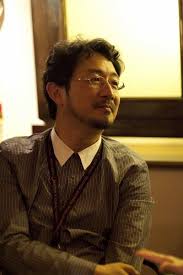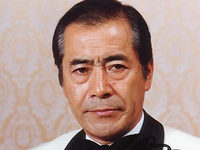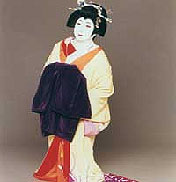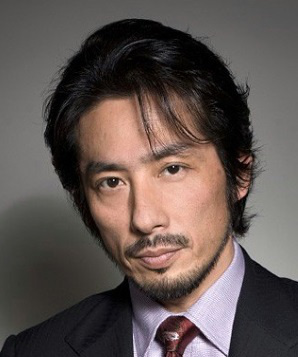BONSAI: UNIVERSE IN TREE
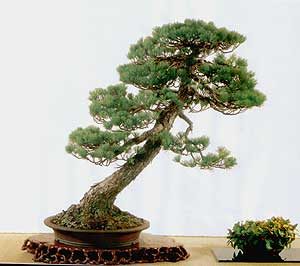 In the East, trees, herbs, and flowers are worshiped as living beings. They conduct confidential conversations with them, as with close friends. They are idolized. Monuments are erected to beloved plants when their life suddenly ends. It has been so since ancient times. Previously, they asked for wind and rain not to break trees. In ancient chants they prayed for an extension of the instant of flowering.
In the East, trees, herbs, and flowers are worshiped as living beings. They conduct confidential conversations with them, as with close friends. They are idolized. Monuments are erected to beloved plants when their life suddenly ends. It has been so since ancient times. Previously, they asked for wind and rain not to break trees. In ancient chants they prayed for an extension of the instant of flowering.
Trees in the East are perceived as beings standing on a par with humans, and they tend to experience the same feelings. The Buddhist idea that everything has a soul and can be reincarnated into anything it attracts to contributes to this understanding of the world.
A man is connected with trees by family ties. All these are phenomena of a single essence, as Zentika tells about it in the play “Basho”, or “Banana Tree”:
The East, permeated with symbolism associated with plants, sometimes well-known, never ceases to fascinate. It is believed that “pines are similar to people of high principles whose manners express their inner essence. They are like young dragons curled up in deep gorges,” the Chinese treatise, “The Word on Painting from the Garden with a Mustard Seed,” says.
In Japan, since ancient times, the image of the centuries-old evergreen pine has been a symbol of immutability, constancy, courage, fortitude, as well as unfading, longevity and eternal youth. She is not only an object of contemplation, but also an object of inspiration. This is reflected in Japanese literature, poetry, painting and other forms of art.
According to one of the deepest philosophical directions of Buddhism – Zen – Bonsai always remains an incomplete arbitrariness, which patiently awaits the touch of the hands and movement of the soul by the new master.
Different types of pines are the most favorite trees in the collections of Japanese bonsai masters. The Japanese red pine has a beautiful reddish-brown bark and delicate bluish-green needles, for which the Japanese called it “female pine.” Black Japanese pine, Thunberg pine, has a deep furrowed bark, which coarsens with age and becomes extremely expressive. It is also known as “brocade pine.” The pine has a small-colored, or white Japanese pine, small needles of silver-blue color and a dense crown. It is called the “rays of the rising sun of Yamato.”
Cryptomeria, ginkgo, various types of yew, juniper, cypress and cypress, arborvitae, larch, Ayan and Glen spruce with short needles (6-13 mm) and dense conical crowns are traditional conifers in the bonsai culture. The age of some specimens in the collections of the Japanese emperor, as well as bonsai masters exceeds 500-700 years. Many of these trees are attributed to the national treasures of Japan. It is impossible to admire these masterpieces that have been handed down from generation to generation. They have incredible attractive, sometimes magical powers.
However, it should immediately be noted that many conifers, and especially pines, are the apogee in bonsai art. They require a high concentration of spirit, a significant emotional mood, knowledge of the biological characteristics of growth and development. Coniferous trees, according to experts, are “something that you need to strive for, step by step, comprehending this art.” Only the accumulated life experience, as well as the practice of working with other plants will lead to the desired result. A bonsai lover must have considerable patience to see the fruits of his labor. “Time goes on, and the tree grows,” daily delighting its creator.
Japanese masters advise
According to Japanese masters, you should start with flowering evergreen or deciduous plants. Among them, one can single out traditional “happy” trees for Japan, cult trees that carry a certain symbolism, no less significant and revered than pine trees.
Umei Japanese plum blossoms in winter when snow lies on Fuji-san. Its flowers bloom on New Year’s Eve, marking the arrival of spring and the beginning of the renewal of the natural world. Plum blossoms are perceived by the Japanese as a sign of the times. With its flowering, the year begins on the lunar, natural, calendar. This is the very first spring plant of Japanese poetic anthologies and at the same time one of the last of the season, for poems glorifying the resistance of plums are also placed in winter scrolls.
As a winter plant that accumulates vital juices even in severe frosts, plum, like pine, is included in the group of “three friends of a cold winter”. Plum blossoms defy winter cold and snow cover through which its flowers, exuding a delicate aroma, will indestructibly with the first breath of spring. On the Japanese islands, there are several hundred of its varieties. Coloring of flowers can be red, hot pink, white, smoky green. Plum with white petals and purple stamens is considered the most valuable. Being the personification of the nobility and triumph of life-giving forces, it is no less significant for the inhabitants of the Land of the Rising Sun.
